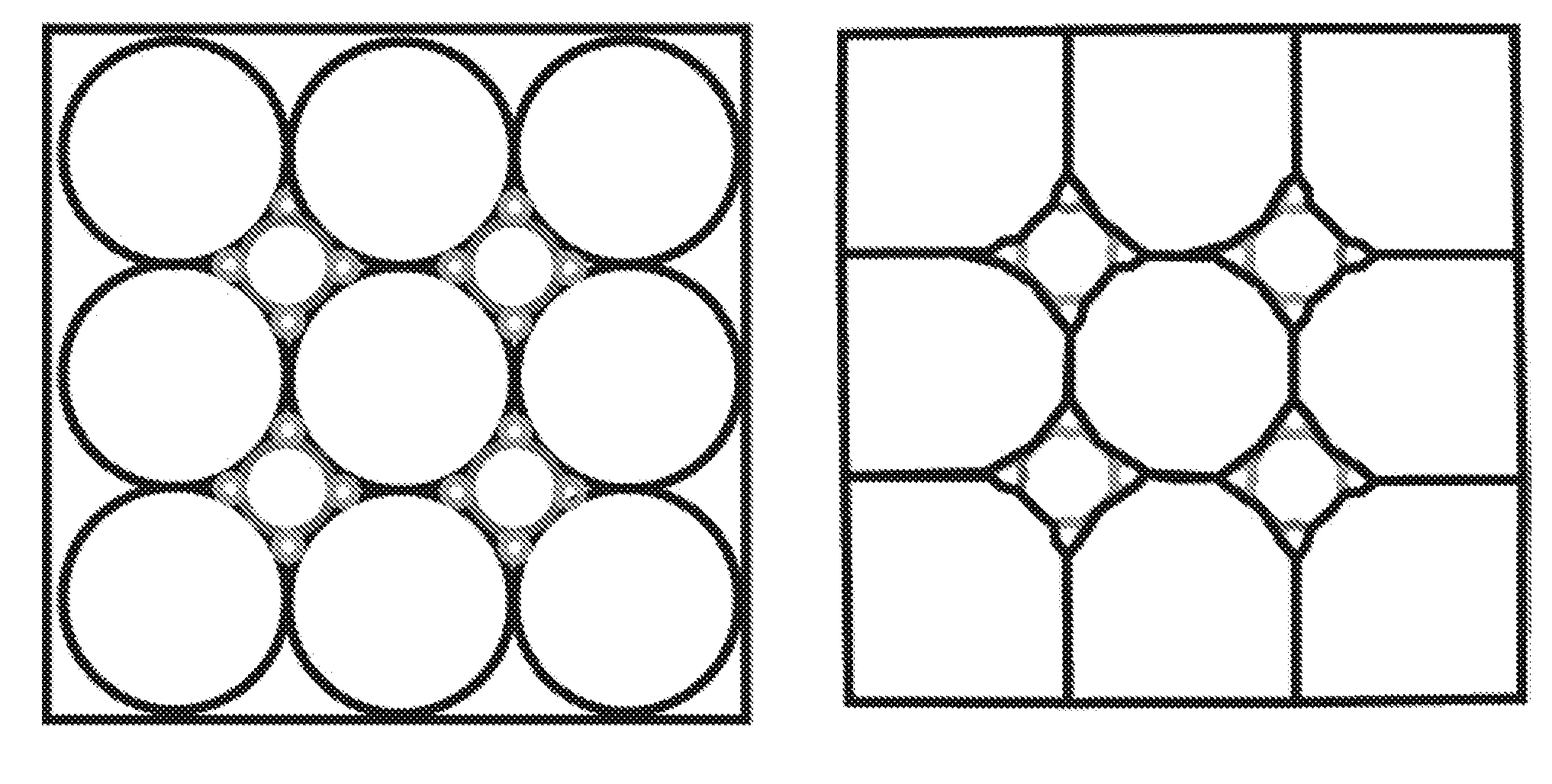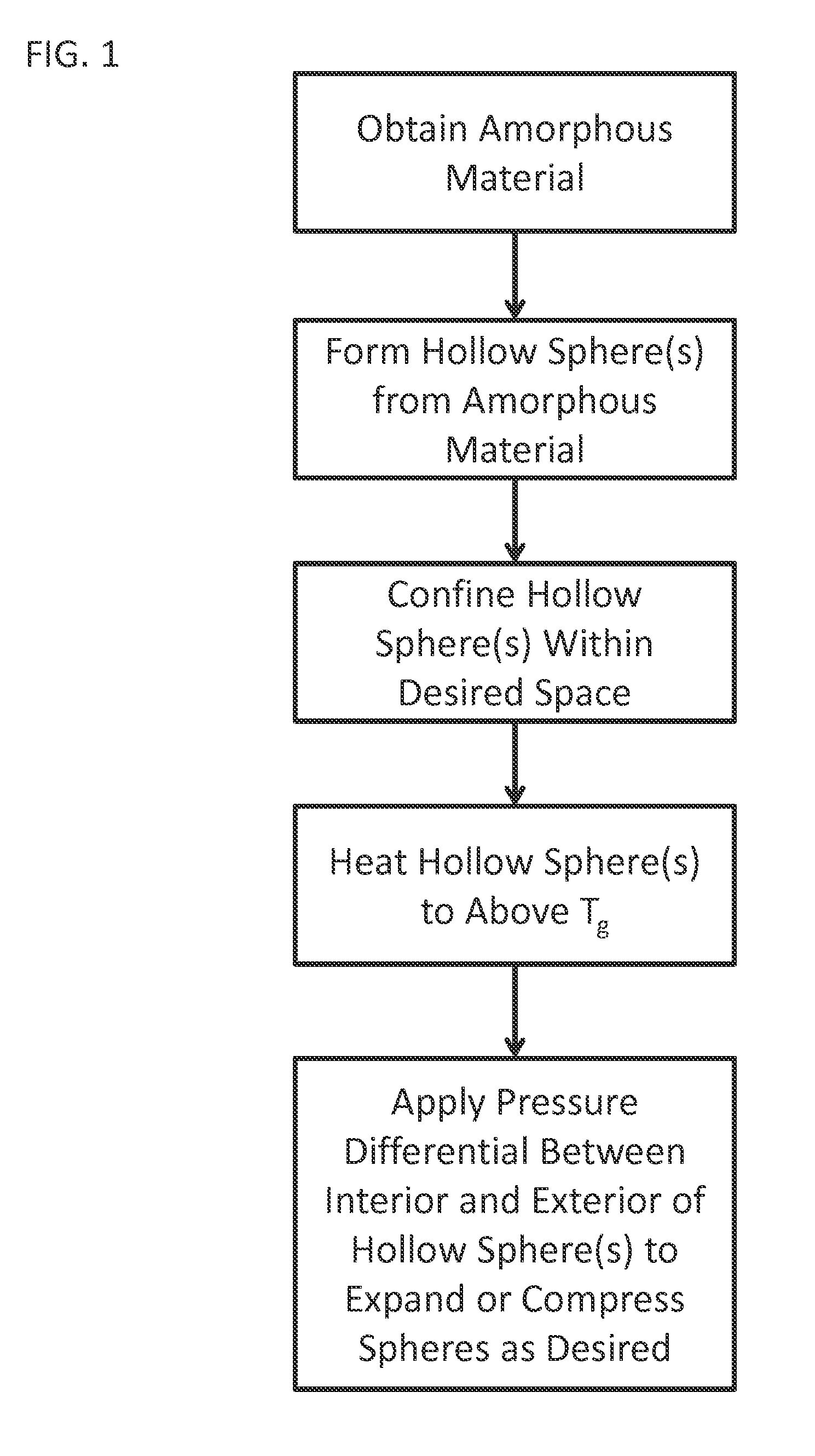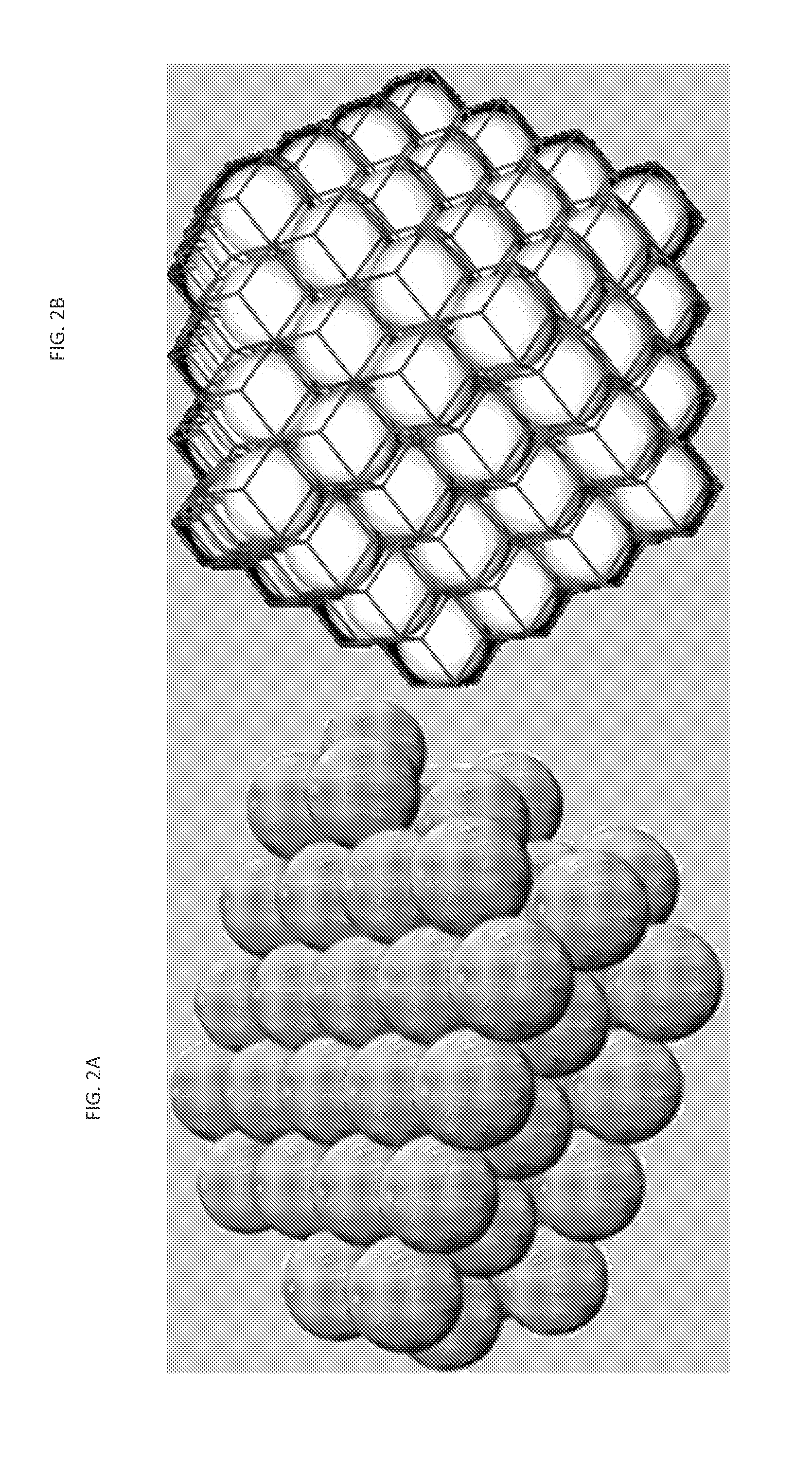Foams made of amorphous hollow spheres and methods of manufacture thereof
a hollow sphere and foam technology, applied in the field of foams, can solve the problems of difficult individual methods, time-consuming manner, limited success of foaming from metallic glasses,
- Summary
- Abstract
- Description
- Claims
- Application Information
AI Technical Summary
Benefits of technology
Problems solved by technology
Method used
Image
Examples
example 1
Study of Theoretical Foam Properties
[0142]Foam properties naturally depend on the material used, the geometry of the foam, the strain rate, and temperature, among other characteristics. However, equations derived for open and closed cell foams with struts arranged like a cube that describe the basic properties have some similarities and can be used to provide some theoretical limits on the properties of the foams of the instant invention. (See, L G Gibson (1997) cited above.) First, the Young's modulus of foams is most generally described by EQ 2 below:
E*Es≈ϕ2(ρ*ρs)2+(1-ϕ)ρ*ρs+Pinternal(1-2v*)Es(1-ρ*ρs)(EQ.2)
All terms are used for closed cell foams, but the internal pressure variable is not used for open cell foams. The final term accounts for internal cell pressure (notice that the stiffness of the foam will increase as the internal bubble pressure increases). With regard to the other terms, E* and Es are the Young's modulus of the foam and the bulk solid respectively, φ is the vol...
example 2
Exemplary Hollow Sphere Cellular Solid
[0154]To prove the efficacy of the technique, hollow spheres of silicate glass were placed in a sealed quartz tube and heated to 1100 C for 1 hour to create the foam seen in FIGS. 10a-10d. The foam dimensions are 4 mm diameter by 25 mm long.
PUM
| Property | Measurement | Unit |
|---|---|---|
| yield strength | aaaaa | aaaaa |
| yield strength | aaaaa | aaaaa |
| yield strength | aaaaa | aaaaa |
Abstract
Description
Claims
Application Information
 Login to View More
Login to View More - R&D
- Intellectual Property
- Life Sciences
- Materials
- Tech Scout
- Unparalleled Data Quality
- Higher Quality Content
- 60% Fewer Hallucinations
Browse by: Latest US Patents, China's latest patents, Technical Efficacy Thesaurus, Application Domain, Technology Topic, Popular Technical Reports.
© 2025 PatSnap. All rights reserved.Legal|Privacy policy|Modern Slavery Act Transparency Statement|Sitemap|About US| Contact US: help@patsnap.com



